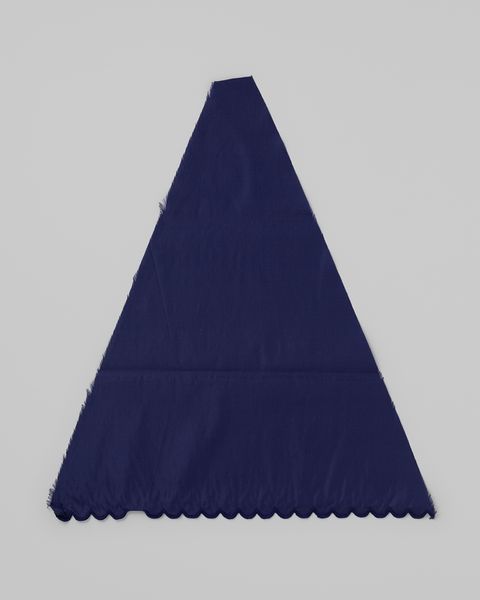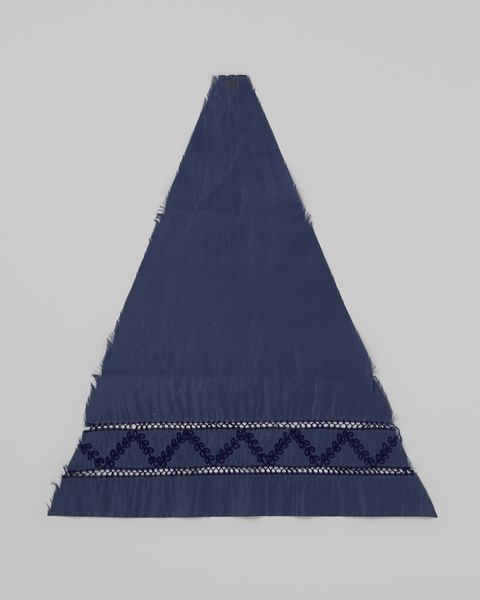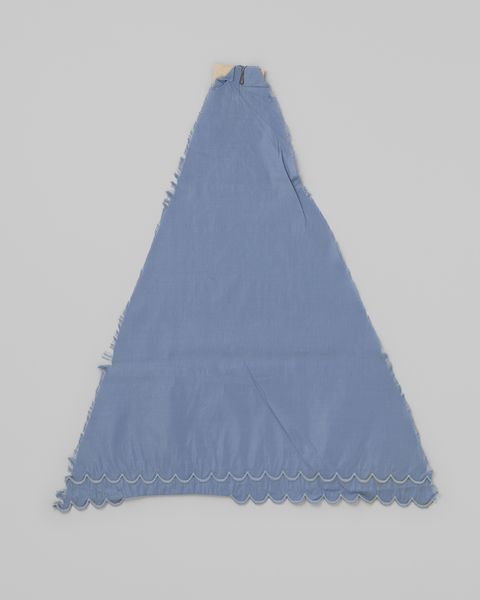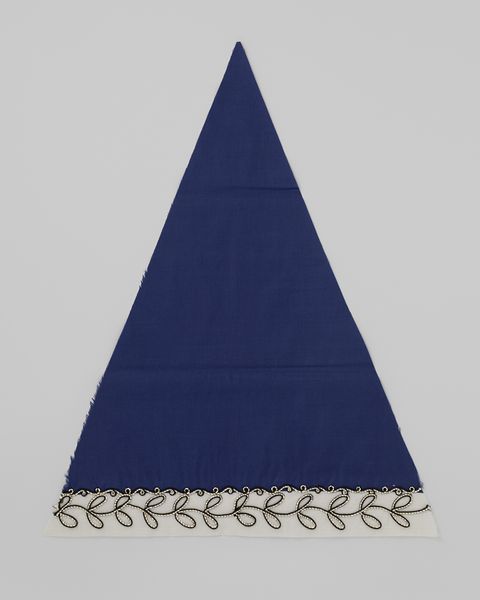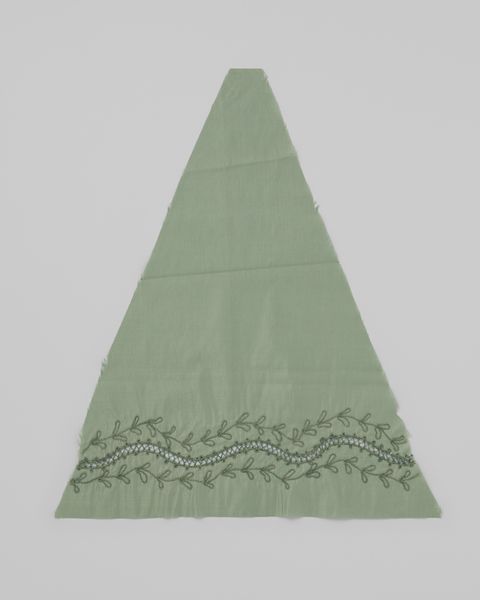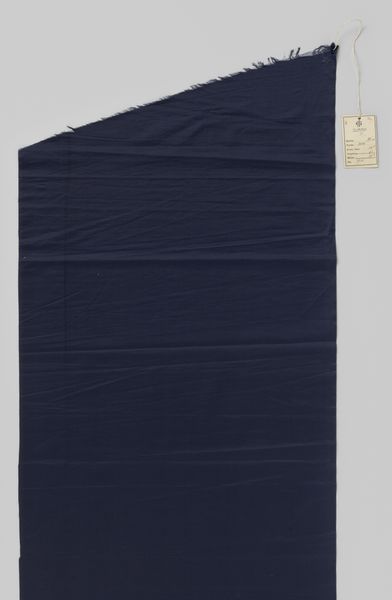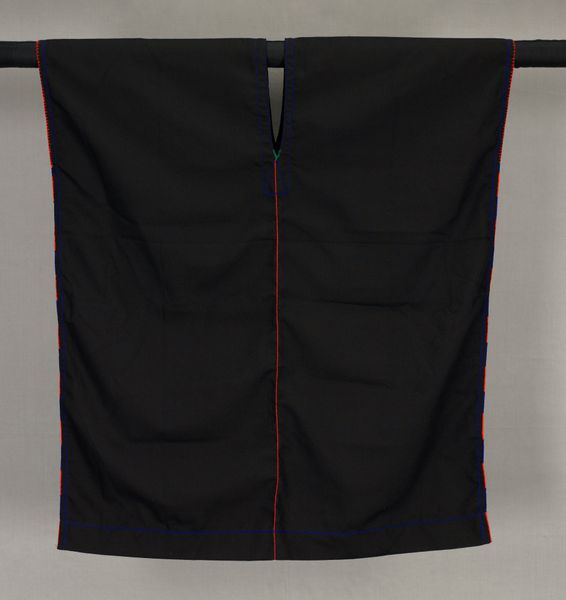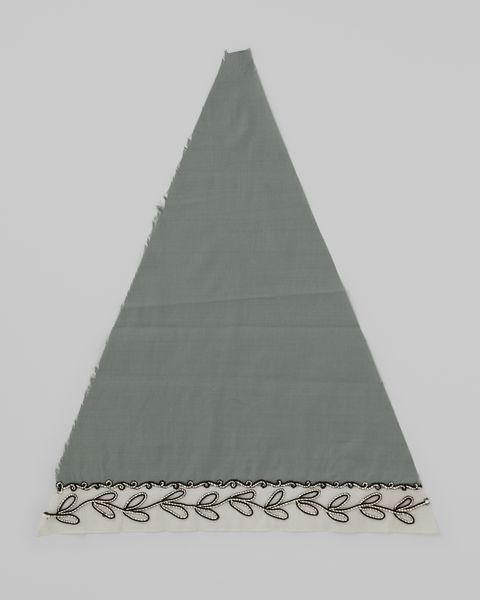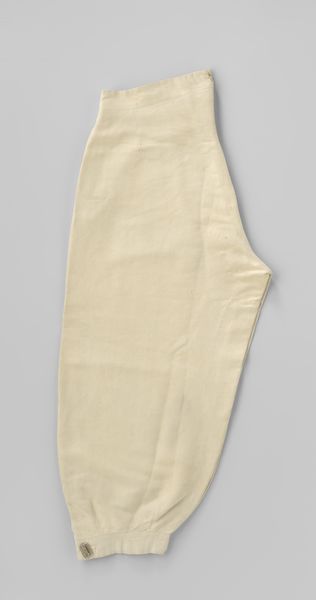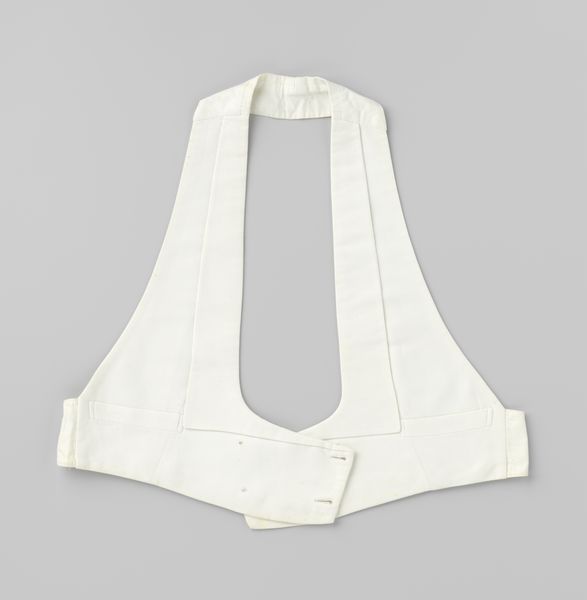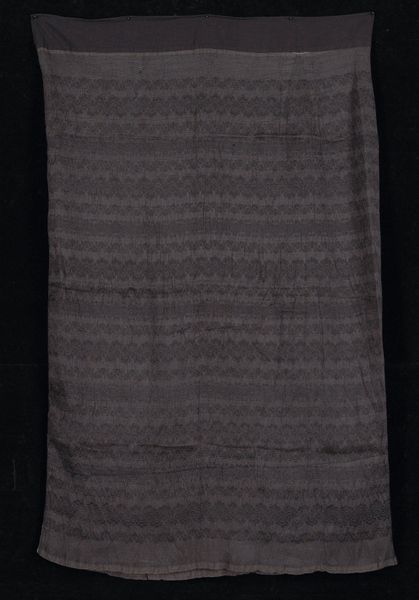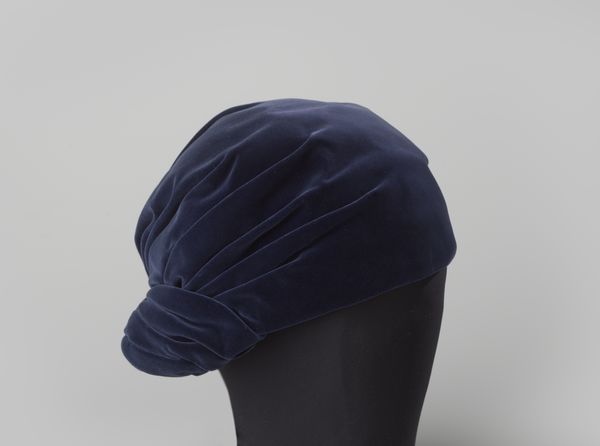
Sector van een parasoldek van ultramarijn katoen; met geschulpte rand 1885 - 1900
0:00
0:00
gustavschnitzler
Rijksmuseum
textile, photography
#
product shot
#
fashion mockup
#
design mockup
#
textile
#
clothing promotion photography
#
abstract
#
photography
#
product design photgrpaphy
#
clothing photography
#
product mock up
#
clothing photo
#
design mock up
#
retail photography
Dimensions: height 47 cm, width 41
Copyright: Rijks Museum: Open Domain
Curator: Here we have "Sector van een parasoldek van ultramarijn katoen; met geschulpte rand," or "Section of a parasol covering of ultramarine cotton; with scalloped edge." It’s dated sometime between 1885 and 1900 and currently resides here at the Rijksmuseum. Editor: It strikes me as surprisingly modern in its simplicity. The sharp triangle of deep blue against the neutral backdrop is quite striking. The scalloped edge provides a playful contrast to the strict geometry. Curator: It's fascinating to consider this object in its historical context. Umbrellas weren’t simply utilitarian; they signaled status. Owning a parasol of this caliber spoke volumes about the owner's position within the social hierarchy of the time. Think about who this woman was, her world, the access that this afforded her… Editor: Absolutely. And beyond status, color, especially the deep ultramarine seen here, played a critical role. Pigments like ultramarine were quite costly, therefore its prominence on a parasol acted as visual communication and solidified wealth. Were parasols considered particularly feminine objects during this period? Curator: They were decidedly feminine. The parasol served to protect fair skin, a marker of beauty and privilege, shielding women from the sun’s darkening rays and manual labor’s inevitable impact. This is very much tied to constructions of beauty and class that women had to abide by. Editor: And how does the photographic approach we see today influence our viewing of it? Presenting the fragment so starkly, removing any suggestion of use, elevates it almost to an abstract composition. We have no body, no user – simply the object itself, staged against an anonymous ground. Curator: Exactly. It invites us to detach it from its immediate use. Its very status as an artifact displayed prompts critical investigation into broader narratives and power relations – challenging gender expectations or social norms in how we look at such objects. Editor: Looking at it, now, it's fascinating how much an isolated object can say about an entire world. Curator: Indeed. By recognizing and grappling with the art history, context and politics intertwined within each viewing, we gain so much more profound meaning from it.
Comments
No comments
Be the first to comment and join the conversation on the ultimate creative platform.
